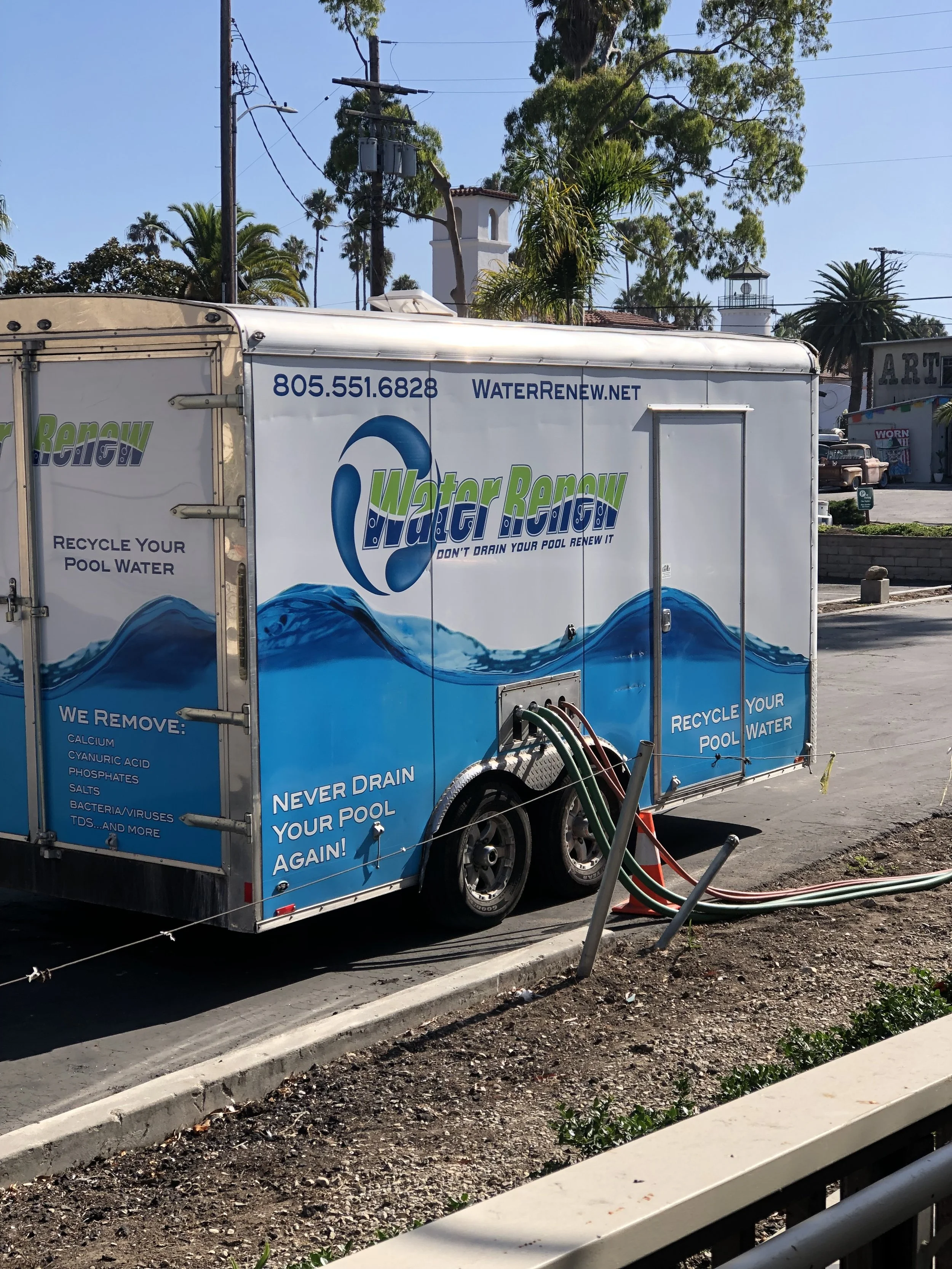Renew your pool water with reverse osmosis!
Breanna Anderson became certified as an Aquatic Facility Operator through the National Recreation & Parks Association in 2016. Breanna & Travis have 10 years of experience in pool management, including pool maintenance & water chemistry.
Have you ever thought about what’s in your pool water?
Probably not.
Advanced filtration systems and regular sweeping/vacuuming keep the pool free of obvious debris: hair, bugs, leaves, and the like. Pool chemicals, like chlorine, prevent bacteria and other germs from lurking in the water and causing illness. But there’s something else that’s hiding in the water and contributing to its salty taste and loss of sparkle: total dissolved solids (TDS).
TDS refer to the total concentration of dissolved substances in the water, including both inorganic salts (like sodium from liquid chlorine & calcium/magnesium from fill water) and organic matter (from body oils, perfume, sunscreen, sweat, urine, deodorant, etc). TDS cannot be filtered or vacuumed: they accumulate over time, providing food for algae in the form of phosphates and reducing the effectiveness of free chlorine. Basically, TDS make it difficult to maintain optimal water chemistry and can result in algae growth and higher-than-desired combined chlorine levels.
In the past, the only way to rid the pool water of TDS was by draining and refilling the pool. Not exactly an environmentally friendly option, draining/refilling has its fair share of negatives: the process takes a very long time for large pools, the fill water can be hard & full of mineral deposits, and water is quite expensive, especially here in Southern California. Fortunately, newer technologies now offer a great alternative to the traditional dump & fill.
One of those technologies is reverse osmosis (RO). The process of RO involves using high pressure to push a solvent through a semipermeable membrane. Only the purified water passes through the membrane; the contaminants and impurities are channeled to a separate waste stream. In the 1950s, researchers from UCLA and the University of Florida were able to successfully utilize RO to convert seawater to drinking water. RO wasn’t used for swimming pools, however, until more recently. Mobile filtration trailers allow water to be pumped out of the pool, purified, and reintroduced to the pool. Depending on the size of the unit, RO can take 24-48 hours to treat 40,000 gallons of pool water (which is about the size of our pool), and approximately 85% of the water is saved in the process. After RO is complete, the water is actually drinkable! The pool water is re-balanced with the appropriate chemicals and becomes sparkly-new once again.
How can you help us preserve our pool water & reduce the accumulation of TDS?
Make sure you shower before entering the pool — remove any dead skin cells, sunscreens, body lotions/oils, etc. [PRO TIP: Rinsing off is better for YOU and your skin, too — read more about it here]
Do NOT pee in the pool!
Tie back loose hair and remove any band-aids prior to pool entry.
Wear only clean pool shoes to avoid tracking dirt/debris into the water.
The average commercial pool requires RO (or a similar process) every 6-12 months to maintain crystal clear pool water, prevent scaling, and inhibit algae growth. The process is recommended every 2 years for residential pools. How does your favorite pool treat their water - draining? Annual RO? A custom fill line RO system? Have you ever thought about TDS before?
Content provided on this website is for informational and educational purposes only; it does not constitute providing medical advice or professional services. Always seek the advice of your physician regarding your health conditions and prior to initiating an exercise program.
